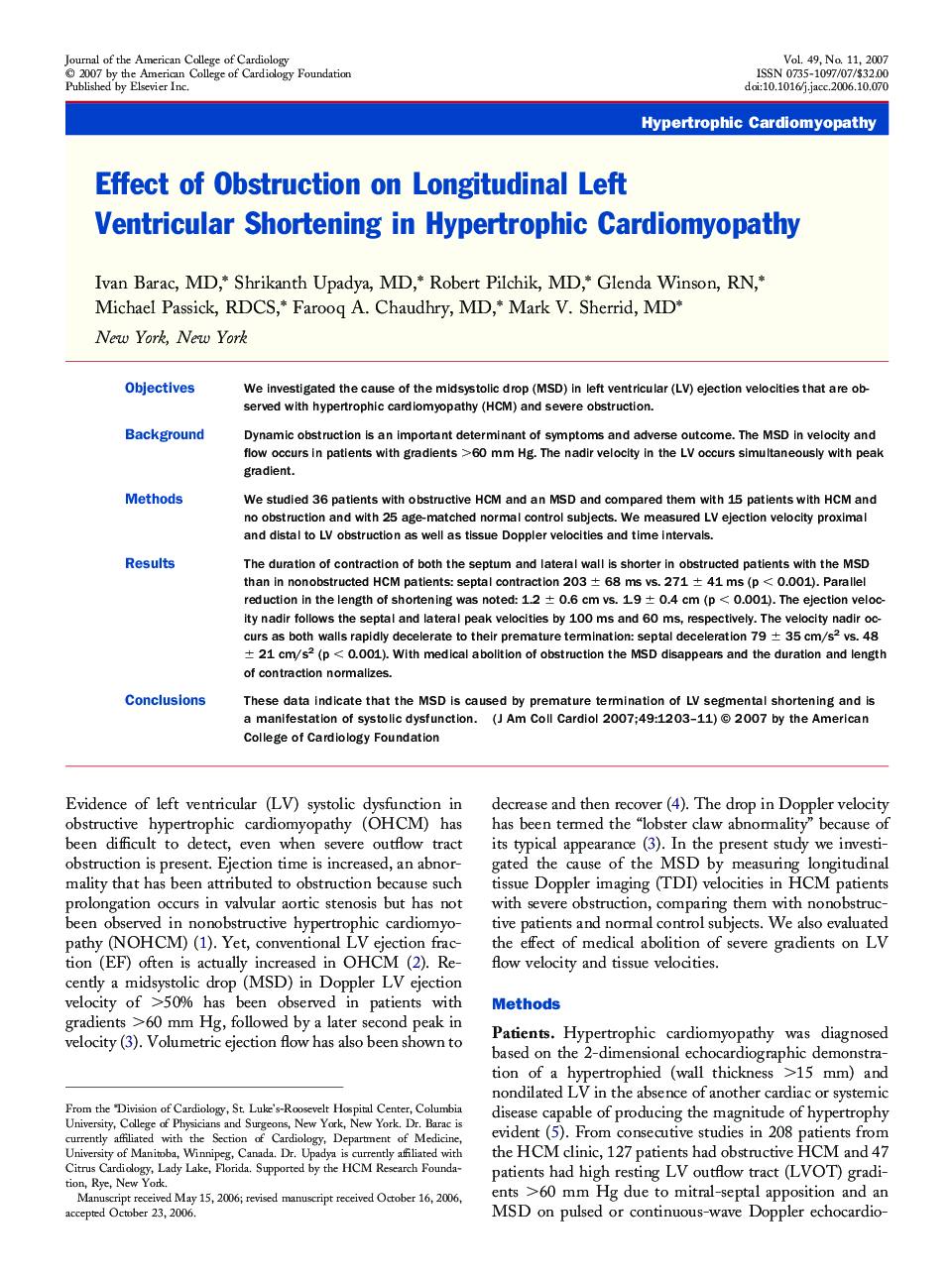| Article ID | Journal | Published Year | Pages | File Type |
|---|---|---|---|---|
| 2953514 | Journal of the American College of Cardiology | 2007 | 9 Pages |
ObjectivesWe investigated the cause of the midsystolic drop (MSD) in left ventricular (LV) ejection velocities that are observed with hypertrophic cardiomyopathy (HCM) and severe obstruction.BackgroundDynamic obstruction is an important determinant of symptoms and adverse outcome. The MSD in velocity and flow occurs in patients with gradients >60 mm Hg. The nadir velocity in the LV occurs simultaneously with peak gradient.MethodsWe studied 36 patients with obstructive HCM and an MSD and compared them with 15 patients with HCM and no obstruction and with 25 age-matched normal control subjects. We measured LV ejection velocity proximal and distal to LV obstruction as well as tissue Doppler velocities and time intervals.ResultsThe duration of contraction of both the septum and lateral wall is shorter in obstructed patients with the MSD than in nonobstructed HCM patients: septal contraction 203 ± 68 ms vs. 271 ± 41 ms (p < 0.001). Parallel reduction in the length of shortening was noted: 1.2 ± 0.6 cm vs. 1.9 ± 0.4 cm (p < 0.001). The ejection velocity nadir follows the septal and lateral peak velocities by 100 ms and 60 ms, respectively. The velocity nadir occurs as both walls rapidly decelerate to their premature termination: septal deceleration 79 ± 35 cm/s2vs. 48 ± 21 cm/s2(p < 0.001). With medical abolition of obstruction the MSD disappears and the duration and length of contraction normalizes.ConclusionsThese data indicate that the MSD is caused by premature termination of LV segmental shortening and is a manifestation of systolic dysfunction.
